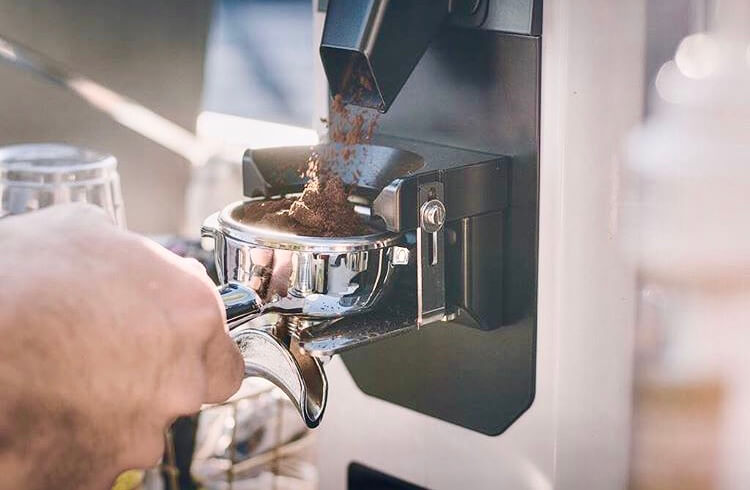SOE Single Origin Espresso – The Ideal Choice for Espresso Lovers
SOE Single Origin Espresso – The Ideal Choice for Espresso Lovers
Blog Article
Coffee Beans Uncovered: Discovering the Tricks of Coffee and Blended Coffee Beans
When you think of coffee, what enters your mind? Is it the abundant scent of coffee or the complexity of a well-crafted blend? Recognizing the nuances of coffee beans can change your experience. Each variety, from Arabica to Robusta, holds its very own keys. As you discover even more, you'll uncover just how these beans form tastes and influence sustainability. What might you find regarding your next mug?
The Origins of Espresso: A Historical Perspective
Although espresso is now a staple in coffee society worldwide, its beginnings map back to the very early 20th century in Italy. You may be surprised to learn that the invention of espresso was driven by a desire for speed and performance. In 1901, Luigi Bezzera patented the initial coffee machine, intending to make coffee faster than standard approaches. This technology promptly captured the attention of Italian coffee enthusiasts, resulting in the espresso bars we recognize with today.
Comprehending Coffee Beans: Characteristics and varieties
When you consider coffee, it's important to acknowledge the various bean selections and their unique flavors. Each kind brings an unique character to your mug, affected by factors like roast levels. Recognizing these components can boost your espresso experience considerably.
Espresso Bean Varieties
As you discover the world of coffee, you'll swiftly find that not all beans are produced equivalent; each variety brings its own distinct flavors and attributes to your mug. Arabica beans are recognized for their smooth, nuanced flavors and lower caffeine web content, making them a favorite among coffee connoisseurs. Each selection provides something various, so exploring will certainly help you locate your perfect espresso.
Taste Profiles Clarified
Recognizing the flavor accounts of various coffee beans can raise your coffee experience. Each bean variety offers one-of-a-kind attributes that affect taste, aroma, and mouthfeel. Arabica beans usually provide a sweeter, more complicated flavor with tips of fruit and flower notes, while Robusta beans often tend to be bolder, with natural and nutty touches.
When you check out single-origin beans, you could uncover unique local flavors-- Central American beans may be citrusy and intense, whereas Italian blends often provide rich, chocolatey notes.
Roast Levels Effect
Roast degrees play a crucial role in shaping the taste and fragrance of coffee beans, influencing your general coffee experience. With light roasts, you'll uncover brilliant level of acidity and more pronounced fruity notes. As you relocate to tool roasts, you'll delight in a well balanced account that showcases sweetness and complexity. Dark roasts, on the other hand, typically existing abundant, vibrant tastes with a great smoky finish, however they can mask the beans' intrinsic attributes. Understanding these roast levels aids you select the espresso that fits your taste preferences. Explore various roasts can lead to delightful explorations, improving your admiration for coffee. So, don't wait to discover various roast levels and find your ideal mug!
The Art of Blending: What Makes Blended Coffee Distinct
What makes blended coffee so remarkable? You can experiment with different combinations to enhance body, sweetness, and acidity, resulting in a brew that's richer and much more complex than a single-origin coffee.
Blending likewise enables you to accommodate varied taste choices. You can craft a blend that's mellow and smooth or one that's bold and durable, relying on your target market. Plus, mixing can assist keep uniformity, supplying a reliable taste experience regardless of seasonal variants in beans. Whether you're a barista or a home maker, grasping the art of blending opens up a world of creativity and flavor possibilities, making your coffee experience genuinely one-of-a-kind.
Taste Profiles: Tasting Notes of Espresso vs. Blended Coffee
Mixed coffee offers a world of taste possibilities, however when it comes to espresso, you're checking out an extra focused experience. Espresso usually showcases bold, abundant tastes with a thicker mouthfeel. You could notice notes of dark delicious chocolate, caramel, and even hints of fruit, depending upon the beans. The strength can be both stimulating and pleasing.
On the various other hand, mixed coffee provides a complex tapestry of tastes. You can check out a selection of tasting notes, from pleasant and nutty to floral and fruity. Each mix can use something unique, typically combining beans from different regions to develop a well balanced profile.
While coffee supplies a punch, blended coffee invites you to savor the nuances. Whether you prefer the durable strength of espresso or the detailed tastes of mixed coffee, each mug informs its very own story, waiting on you to discover.
Brewing Techniques: Developing Your Espresso Shot
To achieve the excellent coffee shot, understanding the brewing strategies is crucial, as also minor adjustments can significantly impact the flavor and top quality. Start by using fresh, top quality coffee beans; grind them just before brewing for optimum flavor. Purpose for a fine work, about the consistency of table salt, to guarantee ideal removal.
Next, take note of your water temperature level; it ought to be in between 195 ° F to 205 ° F. Too hot or also cold can ruin your shot. Usage about 18-20 grams of coffee for a dual shot, and tamp it uniformly with strong pressure to develop an uniform puck.
Lastly, regulate your removal time; go for 25-30 seconds. A longer extraction can lead to anger, while also brief can cause sour flavors. Practice these methods regularly, and you'll refine your skills, attaining that rich, robust coffee shot you hunger for. Delight in the journey!
The Function of Roast Levels in Espresso and Blended Coffee
After grasping the developing methods for coffee, it's time to ponder exactly how roast levels influence the flavor profile of your coffee. Light roasts tend to highlight the coffee's origin, using brilliant acidity and fruity notes, while medium roasts balance acidity and sweetness, creating an all-round flavor.

Discovering Sustainability: Honest Sourcing of Coffee Beans
When you select coffee, you're not simply picking a flavor; you're choosing concerning the influence on farmers and the setting. Comprehending Fair Profession practices, natural farming methods, and qualification standards can assist you support sustainable coffee sourcing. Let's explore exactly how these aspects add to an extra honest coffee experience.
Fair Profession Practices
Fair Trade practices play a crucial duty in ensuring that coffee beans are sourced ethically and sustainably. When you select Fair Profession coffee, you support farmers that obtain fair incomes and operate in risk-free conditions. This dedication to ethical sourcing assists fight poverty and advertises area growth in coffee-growing regions. You'll discover that Fair Profession certification likewise urges eco-friendly farming practices, as producers are incentivized to secure their land and resources. By selecting Fair Trade brands, you're not simply delighting in a rich cup of coffee; you're making a positive effect on the lives of those that expand it. Your choice issues, and it attaches you to a global movement concentrated on justness and sustainability in the coffee market.
Organic Farming Techniques
As you check out the world of moral coffee sourcing, organic farming approaches arise as an important component of sustainability. In addition, it commonly leads to stronger, much healthier coffee plants, resulting in richer flavors in your mug. When you opt for natural coffee, you're making a mindful option that benefits both the world and your taste.
Certification Specifications Explained
Recognizing certification standards is necessary for anyone thinking about fairly sourced coffee. These criteria, such as Fair Profession, Rain Forest Partnership, and USDA Organic, warranty that coffee is expanded under sustainable methods. You sustain farmers that adhere to honest labor techniques and environmental defense. when you choose accredited coffee.
Fair Profession accreditation concentrates on giving fair earnings and functioning problems, while Rainforest Partnership emphasizes biodiversity and environment conservation. USDA Organic guarantees that no synthetic fertilizers or chemicals are made use of. By acquainting on your own with these qualifications, you can make informed options that line up with your worths. Following time you go to your neighborhood café or grocery store, try to find these tags, and really feel good recognizing your coffee acquisition favorably influences areas and the setting.
Often Asked Questions


How Does Elevation Influence the Growth of Coffee Beans?
Elevation effects coffee bean growth by affecting temperature and environment. Greater elevations commonly produce denser beans with even more complicated flavors, while reduced elevations can result in faster development however much less delicious end results. You'll taste the distinction!
What's the Difference In Between Arabica and Robusta Beans?
Arabica beans are sweeter and much more complex, while Robusta beans have a more powerful, harsher taste with higher high levels of caffeine content. You'll locate Arabica chosen for specialized coffees, whereas Robusta's often made use of in immediate coffee and coffee blends.
Can Coffee Beans Spoil or Lose Taste In Time?
Yes, coffee beans can spoil and lose taste in time. If you store them improperly or keep them also long, they'll end up being stagnant. Constantly keep your beans in an impermeable container far from light and dampness.
What Are the Health Conveniences of Drinking Espresso?
Drinking espresso increases your power, enhances psychological quality, and might decrease the risk of specific conditions. It's abundant in anti-oxidants, sustains metabolism, and can enhance mood, making it a beneficial choice for your day-to-day routine.
Exactly How Does Water Top Quality Influence Espresso Removal?
Water quality considerably influences espresso extraction. It impacts the solubility of flavors and oils, affecting taste and fragrance. Using filtered water can improve your coffee, ensuring a delightful and well balanced mug each time you make.
Coffee Beans Uncovered: Finding the Secrets of Espresso and Blended Coffee Beans.
Recognizing the taste accounts of different espresso beans can boost your coffee experience.Roast degrees play an essential function in forming the flavor and fragrance of espresso beans, affecting your general coffee experience (SOE).Blended coffee provides a world of flavor possibilities, yet when it comes to espresso, you're looking at a much more focused experience.After understanding the developing strategies for coffee, it's time to consider how roast levels affect the taste account of your coffee
Report this page